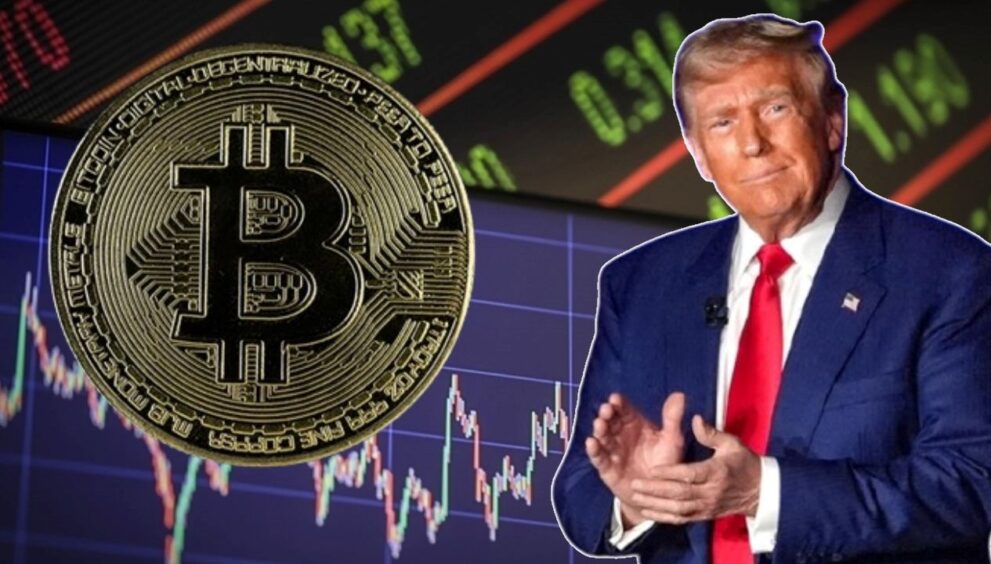Trump Effect Erased: Bitcoin Futures Spread Falls by $490

The optimism observed in the Bitcoin market after Donald Trump’s victory in the U.S. Presidential elections quickly disappeared. The decrease in the CME Bitcoin futures spread to $495 indicates that investors no longer expect the support from a crypto-friendly president to be reflected in pricing.
Following Donald Trump’s victory in the U.S. Presidential elections, the optimism observed in the Bitcoin market significantly diminished with developments reflected in the futures trading data. Changes seen in the CME Bitcoin futures curve indicate that the expectation of a crypto-friendly president benefiting the sector has been pushed to the background, revealing that macroeconomic dynamics are now determining factors. BITCOIN FUTURES SPREAD HITS POST-ELECTION LOW
One of the most important indicators measuring investor sensitivity in the Bitcoin market, the CME Bitcoin futures spread, fell to its lowest level since the elections in November. The price difference between continuous next month and front month futures trading had risen to $1,705 on December 17, but has now dropped to $495 according to the latest data. These figures provided by TradingView signal that the optimism in the market regarding Trump’s presidency has been completely erased.
Thomas Erdösi, the Product Director at CF Benchmarks, stated to CoinDesk, “The narrowing spread between next month and front month CME Bitcoin futures may indicate a decrease in investor price expectations.” According to Erdösi, the market has fully priced in Trump’s election victory, diminishing optimism about the impact of a crypto-friendly president. Speaking of a significant decline in Bitcoin futures since the beginning of March, Erdösi mentioned, “This indicates that President Trump’s election has been priced in and short-term expectations have softened.” MACROECONOMIC FACTORS TAKE CENTER STAGE AGAIN
The growing correlation between Bitcoin and traditional financial markets highlights that the crypto market has become increasingly sensitive to macroeconomic developments. Recent drops of 8% in the Nasdaq index and 20% in Bitcoin show that the market is responsive to factors such as geopolitical uncertainties, Trump’s uncertainties in trade policies, inflation, and economic growth expectations in the U.S.
The digital asset reserve policy of the Trump administration also became one of the factors increasing disappointment in the market. Last week, Trump signed an executive order for establishing a strategic reserve containing seized Bitcoins under sanctions. However, the expectation that this reserve would make new Bitcoin purchases did not materialize. Ian Balina, the founder and CEO of Token Metrics, stated to CoinDesk, “The announcement about the Strategic Bitcoin Reserve did not meet market expectations. Many investors were expecting the reserve to make new Bitcoin purchases. Instead, it was announced that the existing Bitcoins would not be sold or confiscated. Although this is a positive development, the market did not price it in and experienced a sharp sell-off.” CME FUTURES CURVE STILL IN CONTANGO
Despite the narrowing of the futures spread, the CME Bitcoin futures curve still maintains a contango trend. Contango means that long-term futures contracts are traded at a premium compared to short-term contracts. Although this suggests that investors expect prices to rise in the future, recent market movements may have been caused by squeezed leveraged long positions in the spot market. Erdösi commented, “The positive trend in continuous funding rates and the futures basis still being in contango indicate that the recent market movement is more likely due to pressure on unleveraged spot long positions rather than a broader collapse.” The recent developments indicate that the Bitcoin market has largely moved past the post-Trump optimism and is now focusing more on broader macroeconomic variables.






















































































































































































































































































































































































































































































































































































































































































































































































































































































































































































































































































































































































































































































































































































































































































































































































































































































































































































































































































































































































































































































































































































































































































































































































































































































































































































































































































































































